Celia Lake's Blog, page 10
December 9, 2022
Surprise! Giveaway
(This giveaway is good through 11:59pm Eastern Standard Time on Tuesday, December 13th, 2022. I’ll edit this post when it’s done, just to avoid confusion. We’ll make a decision on Wednesday the 14th and be in touch promptly with the winner.)
Do you love jewellery? Do you know someone who does?My dear friend Elise Matthesen is an amazing jewellery maker – and also a lover of my books. She’s offered a delightful giveaway, with a short timeframe. One lucky person will win an item from Elise’s shop (based on your answers to question 2).
Here’s how the giveaway works(Some practical details follow, down below the photos. Also, more about Elise’s work.)
Send me a message by the deadline above and you’ll be entered in a drawing for a piece of jewellery from Elise’s workshop. We’ll make the decision on Wednesday, the 14th, and get in touch promptly with the winner.
Send me an email at celia@celialake.com (or use the contact form). You can also reply to any newsletter email from me. Putting “Elise’s Giveaway” in the subject line will help me out.
In the email, tell me two things:
Who’s a favourite character or book of mine?(If you haven’t read anything yet, tell me about one you might be interested in. You can also get Ancient Trust, a prequel novella, by signing up for my newsletter .)
Take a look at Elise’s Etsy shop and let me know three different items you love: one small (under $100), one medium (lower $100s) and one big (anything above that).
The winner will get an item from Elise’s shop. This might be one of the items from the shop, based on your list. Or it might be something that no one else has seen yet! (If this is the case, Elise will share photos of things on her workbench to choose from.)
There are more things getting posted this weekend, so keep an eye out!
Tell everyone you know!Please pass on the link to this post about the giveaway to anyone you know who might be interested, share it on your social media spaces, tell the bees, and whatever other ways you have to get the news out! The more the merrier.
You can share these posts on social media (or link back to this post, of course).
Mastodon Twitter Facebook More about EliseElise won the Hugo Award (a major award in the Science Fiction and Fantasy fandom community) as a Fan Artist in 2020. Her pieces are in the collections of quite a few authors, musicians, artists, and other creative folk. Many of us have a custom of picking up something from Elise for a major achievement in our creative lives.
If you’re a fan of Lois McMaster Bujold, as I am, Elise both designed Lois’s award pin collar and makes planet pendants similar to those referenced in the Vorkosigan books at one point.
Here’s a few samples of Elise’s previous work. Again, check out the shop for the current delights!
 Almost Monochrome pendant
Almost Monochrome pendant Blue lampwork earrings
Blue lampwork earrings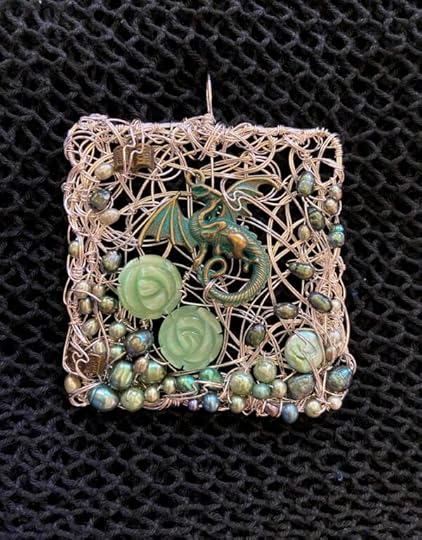 Dragon with Green Roses pendant
Dragon with Green Roses pendant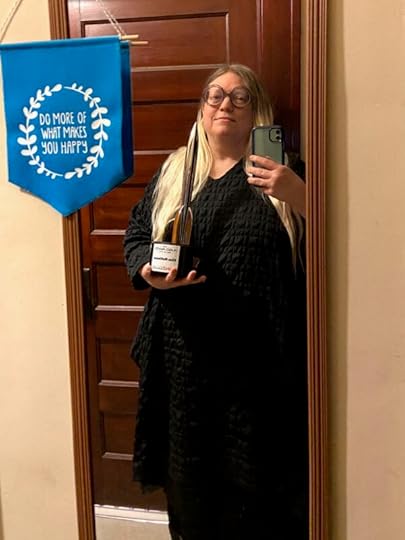 Elise, holding the Hugo Award
Elise, holding the Hugo Award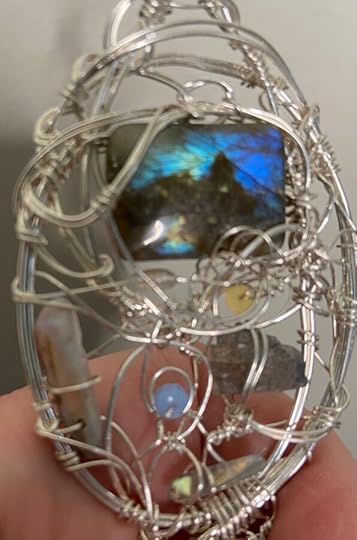 House in the Labradorite
House in the Labradorite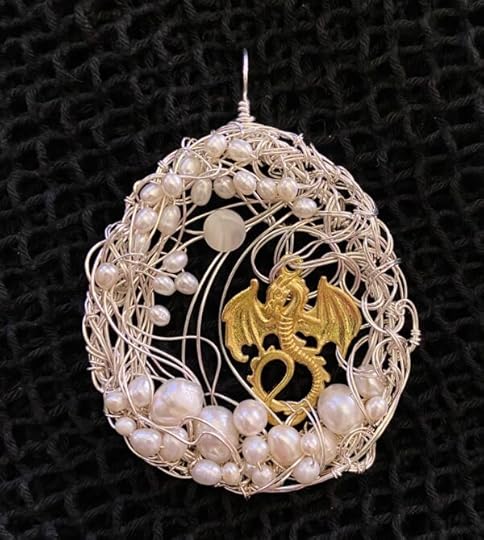 Pearl Dragon with Moon pendant
Pearl Dragon with Moon pendantI’ve had the pleasure of knowing Elise for more than 20 years, so as you might imagine, I have quite a few of her pieces by now!
The necessary giveaway detailsBy entering, you understand that if you are the winner, I will be sharing your email address with Elise to make arrangements about getting the piece you have won.
Elise ships regularly, but depending on where you are in the world, the piece may not make it to you in time for holiday gift-giving.
No reading of books or purchasing of anything is required, but we certainly hope you enjoy thinking about wonderful things to read and look at!
The post Surprise! Giveaway appeared first on Celia Lake.
December 8, 2022
The naming of characters is a difficult matter
(Look, I couldn’t resist the T.S. Eliot reference, I’m only human.)
To be more serious, the names of characters are something I spend a lot of time thinking about. I got a great reader question about it this week, and that makes it a wonderful time to share some of how I do this.
To be honest, there’s a lot of staring at my list of names and sighing a lot. But I also have established patterns that help me sort out what I’m doing with the names.
(As a note, links to character names in this post will go to their WorldAnvil pages so you can see where they appear most easily.)
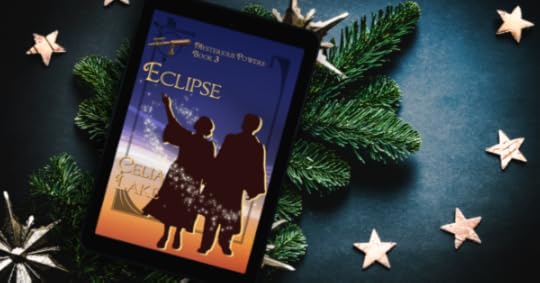 Eclipse is a great example of several different naming patterns in my books. Basic principles for names
Eclipse is a great example of several different naming patterns in my books. Basic principles for namesFundamentally, when I’m choosing names, especially for major characters, I want a name I’ll be able to spell reliably. (Sometimes I guess wrong: the heroine of Shoemaker’s Wife is Clara, and the number of times I have typed Clary instead is not small.)
I also want a name that reflects some aspect of the story or their character, ideally. That can be a hint at their goals, what their family hoped for them, or something else of the kind. (Adam is Adam because I couldn’t resist it given the apples.)
I also want a name that reflects where they come from, and what their family hopes were (since that’s often a big factor in naming). Sometimes it’s family traditions, sometimes it’s a name with a particular meaning to steer the child in that direction.
Sometimes characters are just very insistent about what their name is.
Finally, on a practical level, I want a name that’s easily distinguished from other characters in the same book. Orion in Eclipse was almost named Theran until I looked at the page, realised how similar it was in shape to Thesan, and knew that would be a bad idea.
(I do have some overlaps if you move between books, but hopefully Richart Hase and Richard Edgarton will never actually be in the same room at the same time…)
Inspiration and ideasA while back, I went through a lot of name lists and built a massive list of names. When I need one for a minor character, I’ll skim that and see what stands out. It includes a lot of Latin-derived names, more obscure Victorian and Edwardian names, and those relating to things like colours, astronomy, mythology, and other similar topics. I discard names I think have too much modern association (Jennifer!) or that I just don’t want to have on the page for some reason.
(Someone asked about Asenath recently, and I’m pretty sure it migrated onto that list from a Biblical names list, or one of the “names that have fallen out of fashion” list.)
If I’m looking for a name with a particular source, origin, or meaning, I rely heavily on , a fantastic site that will let you search or browse on a wide range of criteria. (Click on the magnifying glass next to the search bar at the top for options.) I’ll sometimes do searches elsewhere to confirm information, but that’s where I do a lot of browsing.
Naming culture and customsOne of the things about names is that they go through customs and fashions, often in cycles. The popular names in a given year often jump back two or three generations: not the names our parents used, or maybe our grandparents, but our great-grandparents. (And of course, there are perennial standbys.)
And of course, I’m writing in a world where some families have particular magical and ritual customs, and that definitely includes naming.
The First Families like their Latin namesThe First Families proudly trace their line of descent to the Romans, in some way, shape, or form. Their naming patterns often follow those traditions, with a noticeable preference for Latin, Latinate, or other classical names. This doesn’t necessarily mean this is what they go by!
Giles (in Wards of the Roses and Country Manners) is a great example. Formally speaking, he’s Aegidius, and he refuses to use it. His parents are Tiberius and Delphina, and his brother is Caesarius, so you can see where this comes from.
Other examples of this naming pattern include:
Proserpina (who goes by Pros) Galen Cadmus (his family have a particular affiliation with Thebes and its mythology) Cyrus Thalia (and her siblings Phoebe and Pierus)The Second Families value their heritageThey trace their background back to Egypt and related regions (especially Ptolemaic Egypt).
Ibis (in Magician’s Hoard and Chasing Legends) is properly Thutmose, but uses Ibis as a name less likely to be mangled in English. It’s also a particular sort of play on names: Thutmose means, roughly, ‘born of the god Thoth’ (or Djehuty). The ibis is Djehuty’s bird.
Alexander (and his brother Phillip) have names that echo in Egyptian history (Alexander the Great and his father, Phillip of Macedon), but that also work well in French and in English). It’s a very particular naming choice, for Egyptian and French parents.
(Alexander does also have an Egyptian name, but he has what he feels are excellent reasons for not using it. It’s discussed in the forthcoming Nocturnal Quarry out in the spring of 2023.)
The Third Families love names from French myth and legend.The Third Familes trace their heritage to France, and many of them have names that anchor particularly in Merovingian lore, or the time of Charlemagne (as well as names that have more generally passed into use in English.)
The most obvious here is Melusina, Roland’s mother. (A novella of her romance with Arthur is coming in mid-December.) Melusine or Melusina is a figure out of legend, a powerful and terrifying spirit of fresh water. A number of mediaeval dynasties (including the Merovingians and the Plantagenets in England) traced their line back to her.
Isembard and his brother Garin’s names come from similar lore – Isembard was the name of a vassal of Charlemagne.
British lore and custom, the Fourth FamiliesWe have quite a few names that come from British folklore or custom, mostly people from the Fourth Families (those who come from Anglo-Saxon, Celtic, or other backgrounds not in the Great Families above.)
These include common English names like
Rufus (named for his auburn hair, and because it’s a common name in the New Forest area) Katherine (who goes by Kate) Martin Thomas Adam Elizabeth (who is almost always “Mason”, her last name.) Rosemary Dilly (who I suspect has a very different formal name, but she hasn’t told me what it is. Her parents are serious social climbers. She’s been Dilly since she had any choice in it.) AnnaI have an incredible tendency to name minor male characters George (there were, at one point, four men in Outcrossing named George until Kiya glared at me and I fixed that. In my defence, it’s an incredibly common name in the UK.) I finally named George in Fool’s Gold to get it out of my system in a particular way (given who and what he is), and that’s worked very well.
There are also names common to particular regions or languages:
Mabyn (Cornish) Elen (Welsh) Una (Irish)And of course, some characters have family names from other cultures. Golshan is a Persian name that means rose garden (as Golshan contemplates at one point), and Rathna is a Bengali name that means jewel or precious stone.
(As a note, I was asked recently how it’s pronounced: Rahth-na, with a sort of aspiration on the th, as I understand it.)
Other sources of namesSometimes names just sound right. Sometimes I’m going for the sound or a meaning, and hit on something that works.
Richard is a good solid English name, if not particularly Latinate. (His father was Antonius.) Hugh has origins in a number of places, suitable to a family associated with transport and ships. Alysoun is a much older spelling of the more common Allison or Alison. Castalia needed a name that sounded posh for business purposes, but she is very much Cassie at other times.The Cousins tend to names with strong folklore associations or that come out myth and legend. We have Vivian, who shares a name with the priestess of Avalon in Arthurian, and Robin, who is indeed rather puckish in nature. Other names for the Cousins come from fairly obscure name lists.
The Scali as a family have a preference for Italian names, in keeping with their origins, though it’s not formal (and Beatrice pronounces her name in the English manner, not the Italian one, usually.)
Fads, fashions, and eternal namesNames sometimes go through fads or fashions. Around 1890-1905, there was a particular fad for Etruscan derived names, because of some ongoing excavations that brought out name inscriptions. Ferry (Feronia) gets her name from this fad, as do Thesan and her siblings (Ilithia or Lia, Orcus or Or, Sethans or Seth, Aphana or Allie, Cel.) Their youngest brother is outside this fad, and is Archibald or Archie.
There’s also a mentioned fad for the name Iseult at one point.
Similarly, as various characters say at points, “Every family has an Orion.” Star and constellation names are reasonably common, and Orion is one that keeps showing up, never the most common in a year, but always present and needing some disambiguation. (Orion Sisley will be showing up again as a point of view character in the third Land Mysteries novel, for the record.)
Names for other reasonsSometimes I hit on a name for a specific reason that doesn’t fit any of these general patterns. Linta, one of the teachers at Schola is a Finnish variant on Linda. Mizar, Thesan’s mentor and predecessor is a star name.
Roland’s father’s family has a preference for hero names (his father, of course, is Arthur).
Rhoe chose her name (she started life as Alexandra, and was glad of the chance to pick something else when she took a name as a committed priestess). It means ‘stream, river, or flow’. All very suitable in her line of work.
Geoffrey Carillon and his older brother Temple’s names are – look, those are just their names, okay? I’m not sure why, entirely, especially Temple. I’m just clear that’s what they’re called. (The question of Geoffrey’s name and how he feels about it is a significant subplot in Best Foot Forward.)
Finally, there’s Gabe. When I started writing The Fossil Door, I realised I wanted a name that could be ambiguous as to gender (the majority of the Penelopes are women). I was in the process of editing Pastiche (where Gabe is born), but realised that if I adjusted dates slightly, he could be Richard and Alysoun’s son. He was already named Gabriel, which could be heard as Gabrielle quite easily.
That’s a quick tour through names and some of their reasons. If you’d like to know more about specific names not mentioned here, or about last names (which are mostly less interesting), let me know, and I’m glad to write a followup.
The post The naming of characters is a difficult matter appeared first on Celia Lake.
November 17, 2022
Where are you, online? (Looking at some social media options)
Hello! Given the world (and especially the Internet at the moment), it seems a good time for me to look at where I’m spending my time online in the authorial sense.
I’ve put together a survey form to ask some questions about what spaces you’d be interested in, so I can think about some options. I expect to get whatever new options I add set up by the end of December 2022 at the latest.
It’s completely anonymous unless you give me your email address at the very end. You can also use the contact form or email me at celia@celialake.com if you’d rather do that.
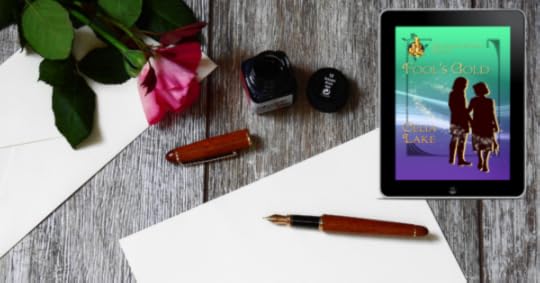 Robin does love his fountain pens. Not so good for online communication, though…Where I am right now online
Robin does love his fountain pens. Not so good for online communication, though…Where I am right now onlineI send out a newsletter on most Fridays. It has my latest news, a highlight of a book that’s been out for a bit, links to any blog posts I’ve made, and notes about the week’s writing. It also usually includes a couple of links I discovered while researching that week.
Twitter is the place where I’ve shared more flippant commentary on the writing process, often with some back and forth with Kiya, my friend and editor (and other half of my brain who makes my books so much better.) If you haven’t been following this bit of the news, I’m not sure how much longer that’s going to be viable. I’ve also shared links to new books there or other news.
I’ve really enjoyed some of the conversation with readers there, and seeing what they say, too, when they tag me in to the conversation.
Facebook is the place where I spend the least time, but it also gets announcements of new books and other related material.
What I know I’m doing going forwardContinuing my current newsletter format, with a mix of news, highlights, links to blog posts, and a roundup of notes on writing and research. It will still be coming to your email most Fridays (or at least Fridays my time, your time zone may vary a bit.)
Adding the option for an announcements-only newsletter. Fewer emails! I’ll send notes when a new book comes out or when I have a new extra to share. I’ll also share a couple of “Here’s what’s coming up” posts a year.
Trying out Mastodon, a similar short-form text and conversation tool to Twitter (though with some cultural differences). You can find me at @celialake@romancelandia.club. Mastodon works by connecting different instances – sort of like neighborhoods or towns – and in most cases you can follow someone from other instances. Romancelandia.club is an instance for romance readers and writers and lovers of the genre.
Sharing more long-form content like blog posts. Where I do this is still something I’m thinking about (see the next section), as is what I focus on. Fill in the survey to tell me what you’re interested in!
Updating my contact page with all the places to find me, and what kind of content you can find there, once I figure some of the details out. (Courtney Milan has a great example of what I have in mind.)
What I’m considering onlineThis is where we get to the part where I want your input! I’m especially looking for a place where there can be some back and forth conversation. The options I’m thinking about are below, but if you have another idea, please let me know via the survey or contact form.
I almost certainly won’t be adding all of these – probably one or two. Filling the survey will both help me figure out which ones to pick, and what kinds of posts or content you’d especially like to see.
Facebook author groups are popular with many readers and authors. But I’ll admit that Facebook is the site I have the hardest time getting myself to check. (I also know that the algorithm means it’s easy to miss posts from groups unless you’re deliberate about checking.) However, it’s definitely a possible option.
Instagram has the same problem with algorithms making it hard to see the content you choose when you choose to. Coming up with graphics for content here would be more work for me (but possible). Conversation in the comments is possible but tricky to follow over a longer period. Making the images accessible is tricky (though I do know a few approaches to that, thanks to my day job.) And I couldn’t share links to amusing research tidbits easily. Not my favouite option, but I’m being completionist about this list.
Patreon allows both free posts (with comments) and paid tiers. There’s better access to comments (including threading) and other tools like polls.
If I set up a Patreon, it would likely have mostly public/free posts, and then a tier or two for additional benefits. The survey asks about some content options. I’m thinking about either sharing extras sooner than the mailing list (after they’re written but before they’re fully edited), or doing a deeper dive on a research topic or bit of worldbuilding. I’m also open to other ideas!
I’ve also had a question about whether I’d be open to Tuckerization (naming a character for someone) or some other more limited benefits. I’m thinking about what I’d be open to and how to make that sustainable for me.
Discord is a social chat tool where individuals or groups can set up a server with its own structure. It started in the gaming community, but they’re widely used by a wide range of groups. (I’m on some reading ones, some writing ones, and some having to do with other interests like fiber arts and religious topics.) You can share text, but also images and links very easily. If you’ve used Slack, it’s quite similar to that.
Kiya and I are both very familiar with using and admining a Discord server. This is the place you’re most likely to see us going back and forth. (Which I think is often hilarious, but I might be biased here..) Discord is free to use, and you can both choose whatever username you like and set a server-specific pseudonym if you prefer. You can use it from the web, a downloaded app on your computer, or your phone.
Take the survey and keep an eye out!Whichever one(s) I pick, I’ll let you know in the middle of December. (The survey will be live until then.) I’ll let you know more about what I’ve chosen, what I have in mind, and some help on getting started on that site around the end of December.
Questions? There are open response spaces on the survey, or use the contact form or email me.
Take the survey! It should only take a few minutes, and you can skip any question you like.
The post Where are you, online? (Looking at some social media options) appeared first on Celia Lake.
November 4, 2022
Best Foot Forward is out!
Best Foot Forward is the one Kiya (my friend and editor) described as “M/M aroace/bi-allo-(incidentally polyam) enemies-to-it’s-complicated there-was-only-one-bed espionage and WWI trauma-healing romp”.
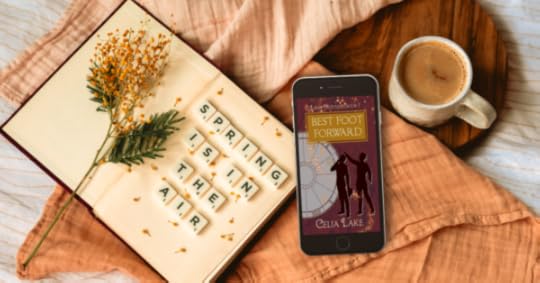
Best Foot Forward also contains:
Vienna and Berlin in 1935The power of springHealing and becoming who we were meant to beLove of musicEgyptian theologyLand magic and the good it can doChosen familyMusic turned out to be a big part of this book, so there’s an additional playlist and explanation of the music references. (It does contain spoilers for the book, but there’s a link in the author’s notes to remind you to go look and listen, or from the book page here on my website or on the authorial wiki.)
Land Mysteries Best Foot ForwardBuy This Book Online



 More options
More options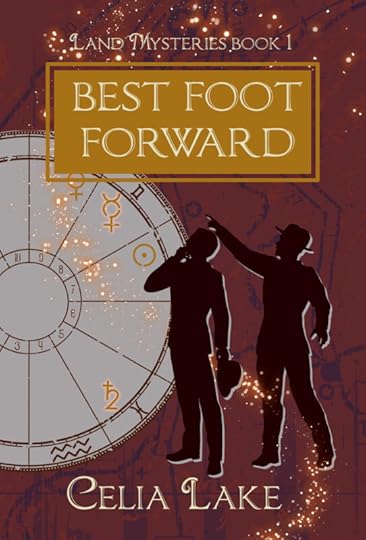


The post Best Foot Forward is out! appeared first on Celia Lake.
The Music of Best Foot Forward
Best Foot Forward is full of music. It’s not only full of music, but it gave me classical music back. There’s so much music that I’ve written a full explanation (complete with a playlist you can listen to). Learn more about the music in what I’ve been calling Best Ear Forward).
Note that it does contain spoilers for the book!
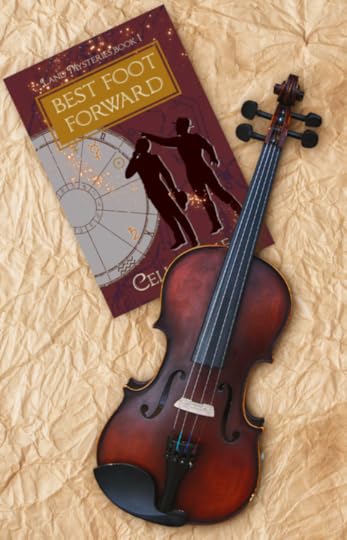 Look at how nicely that violin goes with the cover!
Look at how nicely that violin goes with the cover! The post The Music of Best Foot Forward appeared first on Celia Lake.
October 13, 2022
Keeping research notes
In a recent newsletter, I mentioned that working on Old As The Hills had let me test a research note model for more research-demanding fiction that’s working pretty well. (This is also in service to my contemplating a 1480s series set around the time of the Pact sometime down the road. I have a ton of background reading to do before I can even think about it, so no time soon.)
As I suspected, more than one reader was interested in how I set that up, so here’s a glimpse into my research notes. (Click through on the screenshots to see a full size version, but I’ve also described the contents in the text.)
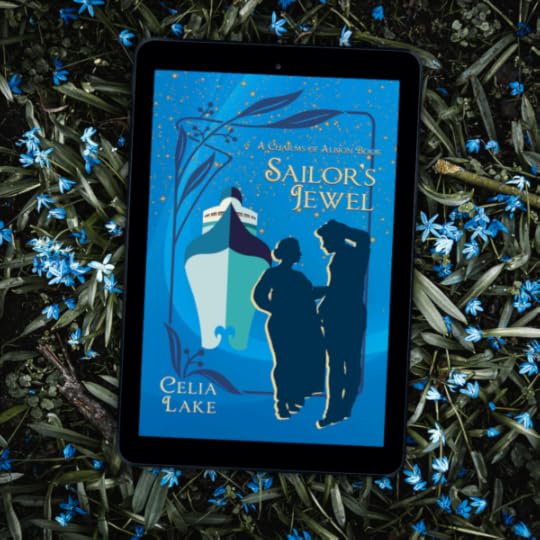 Three kinds of research notes
Three kinds of research notesMy notes share some information, but I use them (and need to reference them) in three different ways. One uses a public commercial service, the other two use Obsidian, an app that takes text files and gives you an overlaying mechanism for linking between them and connecting them in different ways.
1) A public authorial wiki (hosted on WorldAnvil)This exists to help you, my readers, make connections between books. This launched earlier in 2022, and I’m excited by how it’s working, though I have some more tools I’d like to explore. (They keep coming up with new options on the site, some of which I’m using and some of which I’m not using yet. I’ll have time to dig into this at the end of December.) You can read more posts about that here.
2) A private authorial wikiThis one has all my private notes about characters, places, topics, and much more. This is in Obsidian (and I’ll include a couple of examples below of what that looks like.)
My goal with my private wiki is to be able to find information about characters quickly especially things like key dates, how they take their tea, and quotes of key things like “how does this magical thing work?” or the ever popular “what does this person look like who I last mentined five books ago?”.
3) My research notesThese live in a separate set of files (what Obsidian calls a “vault”). It has notes from my research that include quotes from books (so I don’t have to go find the page while I’m writing), events I can put in sequence with a specific tool, and so on.
My goal with the research notes is to be able to find the information I need without disrupting my writing time too dramatically.
4) I also have a series of timelinesI use an app called Aeon Timeline. While most of the dates are also in my private wiki, it has some tools that make dealing with dates and sequence much easier. For example, I can add characters to events and it will tell me how old they are when the event starts. As conscription ages change in World War II, this is coming in particularly handy to see who’s affected and who isnt’.
ObsidianObsidian as an app has a lot of benefits. The files are in an easy to edit and export text format. That reassures me! If Obsidian stops existing as an option, I won’t lose any data, just some of the ways to connect files. All the info could be migrated into other tools if I needed to.
Obsidian also has a robust set of plugins and additions that do different things, and people are using it for a wide range of projects. Usually if I need a specific thing, I can figure out how to make it work if I want to put the time in.
The plugin I rely on most is called Dataview. If you add data to your files in a specific format, you can then create lists of files with links to them.
An example: a list of Council MembersHere’s a list of members of the Council during the events of Best Foot Forward. By changing a variable or two in the information that builds the list, I can change what it sorts on (before taking this shot, I changed it from sorting by when someone ends their time on the Council to when they started.) I clipped the ending time column off this image, because it does contain some spoilers.
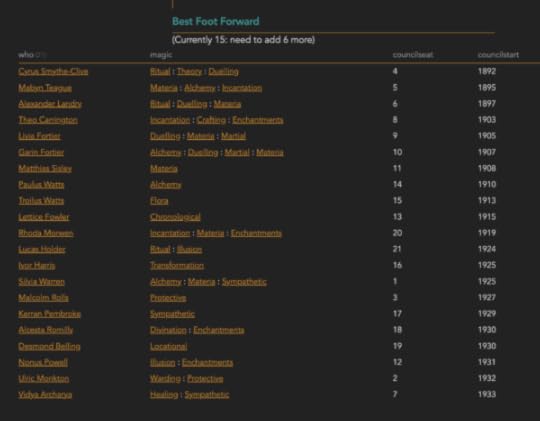
(The Council seat number doesn’t have any deep meaning: it’s there so I can check that I’m not missing someone, and see who takes over whose seat when that’s relevant. You can see my note that I needed to remember to update everyone for 1935.)
And I can do that for any content where I’ve set up the data fields. I can create a list of people with specific magical specialities (those links in the second column go to those pages), in a specific Schola House or secret society, from a particular place. Obsidian also tracks things like “what links to this file” so I have a whole set of files set up for different families and can just look at who links to that page to figure out who’s related.
Applying this to research notesResearch notes are a bit different than my authorial wiki. There are different kinds of information in there, and I’m going to want to find it differently. Old As The Hills involved a lot of background research, because I knew that the various esoteric groups and people responding to the first year of the war were going to be involved.
However (unlike, say, the physical invasion of France), there weren’t single reliable timelines for what was going on when with everything more or less in one place on the Internet. I was going to have to build my own before I could outline the book, to figure out where the chapters went and what was going on in the background.
Enter my research notes (currently at 420 files and counting…)
I took notes from a number of souces (it’s going to be a long author’s note), but one of them was working through the collected letters sent by Dion Fortune to the Society of Inner Light members (and other interested parties) about a long series of meditations and esoteric workings.
An example: a letter from January 1940Here’s a screenshot of my notes on the letter from January 28th, 1940.
It has a note explaining a gap in letters in the collection I was using, several notes about observations, and then says “Let us meditate on angelic Presences, red-robed and armed, patrolling the length and breadth of our land. Visualise a map of Great Britain, and picture these great Presences moving as a vast shadowy form along the coasts, and backwards and forwards from north to south and east to west, keeping watch and ward so that nothing alien can move unobserved.”
It’s followed by that date information, in the format that works best for making lists. Below that, you can see other pages that link to this page.
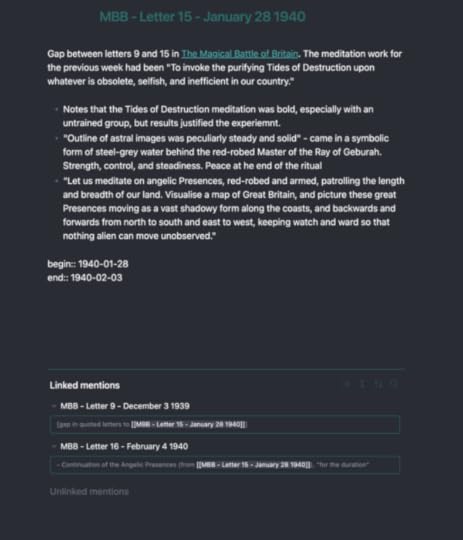
This meant I could write what I think might by my favourite chapter opening yet, when Gabe meets up with Isembard, Alexander, and Geoffrey in the Schola salle:
What information is in my research notes
“Oh, merciful gods. You don’t have rampaging angels with swords stalking about the place.” Gabe let out a breath from the doorway of Schola’s salle. He hadn’t realised how much he’d been carrying around. Two of the three men seated in the salle snorted. Isembard looked baffled for a moment, before settling back into a complicated exhaustion.
Old As The Hills – ChapteR 10
I have a wide range of information in this file (and it’s going to keep going, because this is also where I’m going to put the 1480s research and anything else related to the larger historical context). However, I mostly have a good idea (when taking notes) what kind of information I’m going to need later, and what I probably won’t. I don’t fuss about details of citation formats as long as I can tell where the information came from.
(For the academics reading, there are plugins that will integrate with Zotero, and I think a couple of other citation tools.)
An example page: The Society of Inner LightHere’s an example of my page about the Society of Inner Light, Dion Fortune’s organisation. You can see I’ve linked to various different pages with additional information, and at the bottom there’s some metadata that I can use to create lists. This shot also lets you see the full layout: the sidebars let me specify different kinds of information (headers in the file on the left, a list of files by folder on the right). I often just search for what I need by file name, but I can also browse if that makes more sense.
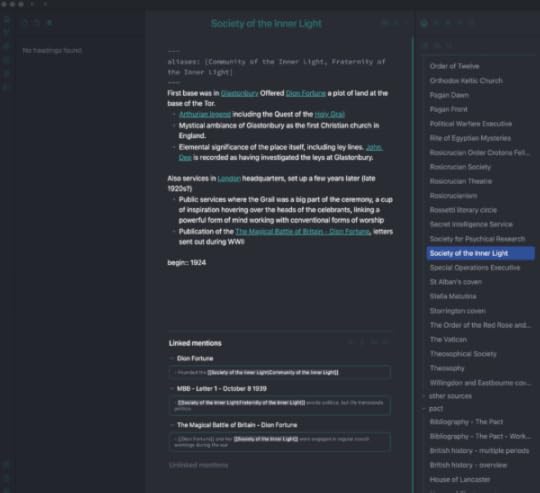
You can see that I’m using a bit of code that lets me set an alias (since a lot of groups – and people! – at this time had multiple names or changed names several times) as well as the begin and end dates at the end.
And here’s an example of how I use Dataview in my research notes, a list of events (files in the Events folder) which have a beginning or end date specified. This lets me cross-check that I’m keeping everything in mind that I need to, or quickly see when a given event happened and get to the relevant notes as I work my way through the book’s timeline. (The files starting with MBB are notes from Fortune’s Magical Battle of Britain letters.)
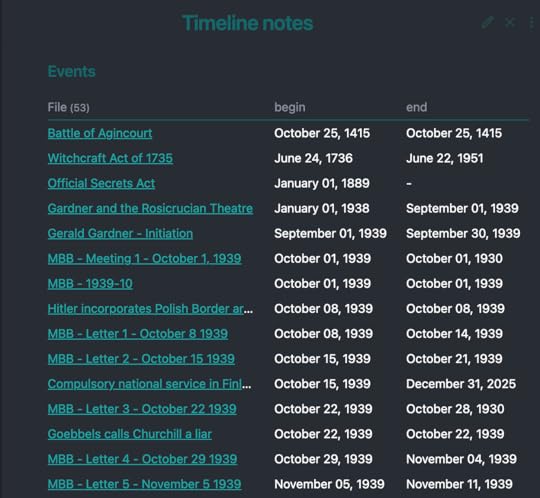 Future plans
Future plansI need to do some cleanup in my files (I always do, but it’s a satisfying task…) but I will be expanding it out as I do additional background research aiming back toward the time of the Pact. But the flexibilty of this system (and the fact I can dump a lot of information in there and still find it later!) has been tremendously helpful. I’m now pretty confident about expanding it from here without ending up in a horrible tangle.
Obsidian has tags as an option (as well as the Dataview information), which I’m not using heavily in the research notes files, but which allow me to highlight particular projects easily or pull together information that crosses different categories. I also use templates to make adding certain kinds of information (like an event) faster, without having to type everything out, and to help me keep a consistent format.
I fully expect a number of aspects of this to change and grow as I add more notes and have other specific needs, but I’m pretty happy with how it’s working right now.
The post Keeping research notes appeared first on Celia Lake.
September 30, 2022
Lords & Ladies: A guide to the land magic
Are you curious about the land magic? Carillon’s background? What it means to be a Lord in Albion?
Did you know there’s a new novella out? It’s my treat if you sign up for my newsletter. (Feel free to unsubscribe when you need to, of course. But I hope you’ll stick around, at least for an email or two that will let you get all the other treats I share with my newsletter subscribers.)
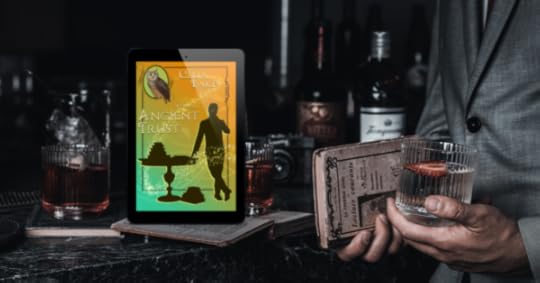
Ancient Trust is all about what happens when Geoffrey Carillon inherits the title on his brother’s death. It has quite a lot about the land magic customs at Ytene. It also led to some interesting questions from a reader.
(I love reader questions. Sometimes I haven’t settled on my final answer about something. But I’ll let you know if you ask something I can’t answer yet. Or if you ask something that’s too much of a spoiler for something that’s coming out in the future.)
The questions:
It got me thinking, how do the Lords of Albion engage with the House of Lords? Is attending Westminster an additional responsibility for Carillion? Do Albion peerages result in having the right to sit in the House? And what about the women? How does the Land Magic recognise women?
These are great questions – and also some that I haven’t quite found the right place to get into text. Let’s take this one by one in an order that should help.
Lords (and Ladies) in AlbionIt’s a very practical title. When Richard III made the Pact in 1484, the responsibility for the national land magic passed to the Council. The Lords and Ladies of the land picked up specific responsibilities for the local land magic of their particular area or the demesne lands.
The precise divisions vary a little, but roughly speaking, most of the historical counties in England have two Lords (or Ladies) responsible. The Carillons hold Ytene, and are responsible for the northern half of the New Forest. The Edgartons hold Veritas, and are responsible for roughly the western half of Kent.
(I’ve mapped some of this out. But mostly I map things like this out when I actually get around to talking about specific people so I haven’t done all of Albion yet.)
Wales and Scotland get a little more complicated in terms of numbers and divisions, but work on the same basic principle. Ireland is not part of Albion at all, though the magical communities are on reasonably civil terms in the 1920s.
Lords and Ladies may have land holdings in other areas of the country. (For example, Carillon has Hawk’s Breath, in Cumbria, which is a family estate, but not his demesne land.)
Who can inherit the land magic?Ideally, the current Lord (or Lady) declares and ritually names a Heir well before their death. In the best of all possible worlds, the Heir has plenty of time to live on the demesne estate associated with the title (where the magical title is anchored). They also have time to learn the particular traditions and are tied into the previous holder via some kind of direct connection. Most commonly that’s bloodline (parent to child, siblings, cousins), because that helps with attunement with the land magic. It is possible to adopt someone in, though, even as an adult.
There’s also a provision for regency, if the holder of the land magic dies without a heir of suitable age. (This comes up in the forthcoming Nocturnal Quarry.)
Once someone inherits the land magic, they can choose to pass it on to someone else. However, removing it from them without their consent is extremely complicated. Intervention by the Council happens only very rarely (less than once a century), because it has a lot of risks. Mostly, the assumption is that the land can coast for a generation, especially if the surrounding estates are well managed.
Women inheriting a titleWomen can inherit and hold the land magic in their own right.
The Hare and the Oak involves a lost heir, who’s a woman, as a secondary character. (Not saying more here, because that’s a spoiler! It does also get into what happens if the current holder of the title isn’t able to sustain the land magic.)
Lady Jenifry Alton (who appears as a minor character in Sailor’s Jewel and The Hare and the Oak) holds the title in her own right. I’m also pretty sure at this point that the Arundel title will pass from Garin Fortier to his brother Isembard. Eventually it will go to Isembard and Thesan’s daughter (rather than their son).
For a woman to stay with the land magic, she needs to find someone willing to marry into her family. In terms of marriage negotiations, that would mean her family magic traditions would predominate, as well as other financial and precedence considerations. That’s historically been a harder sell to potential male partners. (Attractive to people wanting to marry up socially, or where particular marriage alliances are compelling for personal or political reasons, but still tricky.)
PrimogenitureCustomarily, the eldest son of the current Lord and Lady is named as Heir when they reach an appropriate age. Since the Pact, this is usually shortly after they make their oath to the Silence at twelve. But some families delay naming a Heir until they’ve finished their education or some other age.
It’s customary to wait that long to make sure the Heir does in fact have enough magic to make the Pact. Holding the land magic doesn’t actually require a lot of magical power or even training. But those things definitely help in maintaining the estate, fixing problems as they come up, and dealing with unusual events.
If one child is obviously more suited for the land magic than another, the family may also decide to name their Heir differently. (Isembard and Thesan’s daughter is the older of their two children, but she is also much more inclined to Arundel than her younger brother is.)
If the Lord/Lady doesn’t have a child, they can name their Heir at any appropriate time. Geoffrey Carillon is in the middle of the Great War when his parents die and his brother Temple becomes Lord. He can’t get back for the funeral, but does get a long enough leave a month or two later to come back and do that ritual with his brother. (Both parties do need to be present, on the estate that holds the land magic for this ritual. Doing it in absentia is a lot more complex magically and generally not trusted.)
Becoming Heir is magical preparation, rather than being magically binding, so it’s quite common for someone to inherit the land magic in their 20s (before they have children, or have children of appropriate age) and name a sibling or cousin as Heir. At an appropriate point (even a decade or more later) they can name a different Heir when that makes sense. The same obviously applies if something happens to the Heir.
Gabe Edgarton was named Heir when he was 12. Isembard Fortier became his brother’s Heir not long after Garin inherited.
Titles in AlbionThe title of Lord or Lady is a signifier of profession, for lack of a better word, like Guard or Captain or Healer are. That means that it gets applied to the last name. (In some cases, people may adapt their last name when they inherit, by hyphenating names or changing their last name to the name associated with the title if they were adopted in or a cousin.)
Hence, Geoffrey Carillon as Heir to his brother becomes Lord Geoffrey Carillon or Lord Carillon. Social intimates may drop the title in appropriate settings. (Carillon eventually moves to calling Richard and Alysoun that, rather than Lord Richard and Lady Alysoun. He remains difficult and unconventional in getting called by his surname until the events of Best Foot Forward.)
This is not how titles work in Britain in general! Usually the title and the surname are different in that case. (KJ Charles has a fantastic guide to how it works in historical Britain.)
As she says:
“(Or you can ignore all this, make up an alternate universe, and set your own rules. Go for it. But any form of titling serves two purposes: to indicate status, and to mark in-group and out-group via knowledge of pointless rules. So an aristocracy where specific titles don’t matter and have no rules is an aristocracy that, basically, wouldn’t exist in human society. That’s the nature of the beast.)”
KJ. Charles
In Albion, titles indicate status, and the in-group and out-group knowledge of pointless rules has to do with how people handle the show of their responsibilities and a lot of complicated social posturing around the magical skills and education of the people with the titles. Different status set! Some of the Land Mysteries books will get into this in more depth, because what it means to tend the land magic well is different than having visible status as a Lord or Lady.
Interaction with British aristocracyThis is where it gets tricky. It is possible for someone who holds the land magic in Albion to also hold inherited (or granted) titles of nobility in non-magical Britain. It depends!
Some people make an oath to the Pact (and may also be educated at one of the Five Schools or do a magical apprenticeship) but spend most of their lives living in non-magical circles. That may well include being active in the House of Lords, aristocratic non-magical society, and so on. (Fortunately, a certain tolerance for eccentricity explains why they may not be available at some times, when they’re required to be involved in the land rites.)
Other people hold a non-magical title, but are (from the non-magical side) considered recluses, or always on their country estate. Again, there’s rather a lot of historical precedent for this being a thing some people do.
And of course, some people hold the land magic in Albion without holding a non-magical title. In this case, they’re often referred to as Lord Whatever, and everyone non-magical is slightly baffled about where the title connects, but there’s usually some obscure connection that shows up in Debrett’s and other non-magical catalogues of nobility.
I haven’t put this formally in fiction text yet (my definition for what’s canonical for Albion). My inclination is that there used to be a non-magical title in the Carillon family, but it passed out of the direct magical line of the family some generations ago. Same thing with the Edgartons.
All clear as mud? Good! Let me know if you have more questions.
The post Lords & Ladies: A guide to the land magic appeared first on Celia Lake.
August 25, 2022
A glimpse into editing Best Foot Forward
I’m currently in the editing process for Best Foot Forward, and thought you might find a glimpse into the process interesting.
I do most of my writing on the desktop that lives in my bedroom. However, I do most of my editing on the laptop that lives in the living room, which has fewer distractions.
Here’s a shot of what that looks like. Read on for a description of both the image and the process.
 Getting ready to edit Best Foot ForwardOn the screen: my editing setup
Getting ready to edit Best Foot ForwardOn the screen: my editing setupWhat you’re seeing is a shot of my computer, with Scrivener open, and the text mostly blurred.
The left sidebar is the list of files. In this case, this is the end of Best Foot Forward, then the epilogue novella, Intimacies of the Seasons (which will be included with the novel). The point of view character is indicated by the dot at the right of each file. In this case, purple for Alexander, and grey for Carillon. (My colour choices vary on the book and my mood when I set it up. I default to blue and yellow because they show up well, but sometimes I’ll use house colours like I did here.)
The left side of the main window is the working text of the chapter. The right side is the file with my running notes for the entire book. The top of the right sidebar, in dark green, is the synopsis, where I put my notes for the outline. This chapter didn’t happen to have any because the epilogue grew organically. The golden yellow area at the bottom right is the notes for this specific chapter, and it says “Seasonal notes – during the summer solstice sequence, getting flashes”. I’ll talk about the other text in a minute.
On top of the keyboard are my fancy fountain pen (which I love but don’t use often enough) and index cards. (The pen is a Conklin Duragraph in Matte Black/Rainbow. As you’ll see in a second, it has the Diamine Ancient Copper ink in it.)
The process, in briefI always have a book in four different stages, on a three month cycle.
Thinking about the next bookWriting a bookLetting a book sit Editing the book and getting it ready for publicationThis keeps me busy, but it’s been working reliably for me.
I outline in Scrivener, a widely used writing app that allows you to create subfiles you can easily rearrange, along with supplemental information. My outlines start with somewhere between a sentence and a couple of short paragraphs for each chapter, and I write linearly.
Usually, I write in 4thewords.com, a writing gamification site. (I find “let me just finish fighting this monster by writing another 100 words” very motivating sometimes.) When I finish a chapter, it goes to Kiya, my friend, editor, and first reader.
Next, I drop the chapter into Scrivener (where my working draft lives), which has a notes field for each chapter. I add whatever notes I want to remember for later, comments Kiya had about things to bring out later, and anything else that strikes me. Any notes about the book as a whole go into my notes file in Scrivener so I remember larger things to revisit in the book.
When I finish a draft, I add any last notes to the main notes file, and then I set it aside for three months. I’ve found this lets my brain think about larger structure in the book, figure out where I might want to bring out something earlier, add more details, or all sorts of other things that make the book better.
EditingI start the editing process by reading through the whole book. I clean up typos and minor issues as I see them, but I’m not focusing on that just yet. Instead, I’m looking for where the book needs more attention. Often this is smoothing out an arc, bringing out something that’s got a particular resonance, or digging a little more into the worldbuilding. Getting things more out of my head and visibly on the page is often necessary.
As I go, I make notes in that Scrivener notes file, roughly in chapter order. I might add a note to bring something out sooner.
(For example, in the shot above, I’ve blurred most of the text, but you can see “Unity of snow leopards! Add one more reference before about chapter 15.” and “Thematic threads of names and naming.” in the notes file.)
The first comment was because I’d ended up with two references to a snow leopard story that involves Benton and Carillon on their earlier adventures. You can’t just have two references to something like that, it needs three to be satisfying. The second one is a larger thematic question. I wanted to find a few more places to bring out the importance of names earlier in the book.
Working through the bookOnce I’ve done a full reading pass, I organise the notes file so that I can see what changes I need to make chapter by chapter. I also write up notes on an index card for larger thematic questions that don’t fit in any one chapter, but where I’ll be making usually small adjustements to make them more visible or clearer or better woven into the larger story.
That looks like this. (There are no direct spoilers here.)
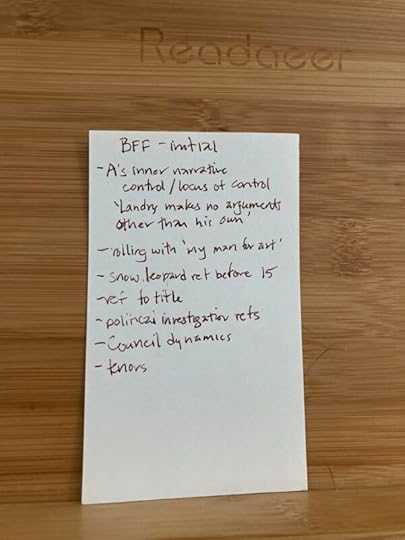 Working edit notes for Best Foot Forward
Working edit notes for Best Foot ForwardAs you can see, these are brief, just enough to help remind me of what I wanted to pull together more. The text reads:
BFF – Initial
A’s inner narrativecontrol / locus of control
‘Landry makes no arguments other than his own.’rolling with ‘my man for art’snow leopard ref before 15ref to titlepolitical investigation refsCouncil dynamicstenorsMechanical editing
Once I’ve got the overall editing of the story where I want it, I run the whole thing through ProWritingAid. That’s a computer writing tool that checks for grammar and spelling. It also has tools for things like internal consistency, length of sentences, and a bunch of house rules I’ve set up for phrases I tend to overuse.
For example, this led me to comment in a Tweet when I was working on this, “Alexander, I know you are impassioned about the [spoiler], but you may not have a sentence 55 words long.”
It’s great for the things computers are good at fixing. I ignore quite a lot of the grammar suggestions for various reasons. Sometimes it got very confused. Other times, the suggestion doesn’t fit the period. (ProWritingAid keeps making helpful suggestions about gender neutral phrasing for different professions, and it is still the 1930s.)
Why the consistency check?As my bio mentions, I was born and raised near Boston, Massachusetts. However, my parents are British. I grew up swapping between British and American English routinely and often without really noticing.
These days, I do almost all my creative writing in British mode, but there are still places where I haven’t entirely internalised a British spelling or my brain just slipped in the moment. (Medieval, for example. I was a Medieval and Renaissance Studies major in college, and have thus written the word a vast number of times in American, rather than the British mediaeval.) The consistency check helps me catch any that slipped through.
New sets of eyesAt this point, it goes off to Kiya, and we usually have two or three rounds of comments and revisions. This is our next step for Best Foot Forward. Kiya’s known me for a long time (we usually date being close friends to the spring of 1996). I blanket accept a lot of suggestions, and maybe change a few words on longer phrases or sentences. We might talk about a few specific passages in more detail, or I may chew on it for a little and suggest something.
My early readers are the bestOnce we’ve done all that, it goes to my early readers, a small group of much appreciated friends. They read, comment, and most importantly let me know if something doesn’t make sense. I get a lot out of knowing what works well for them and excites them. And of course, from their wide range of experiences and sometimes quite specialist bits of knowledge.
We mostly do this in a Google Doc, so they can see each other’s comments, plus whatever comments I leave in before sharing it. Sometimes that leads to great things!
Best Foot Forward exists because Kiya made a comment when we were editing Eclipse (in chapter 14, when Alexander and Isembard are talking about munitions) that said, “I now sort of want the buddy cop story in which Alexander and Carillon team up to utterly destroy a munitions smuggler.”
That got me a comment thread of people wondering how they could encourage this to happen. Best Foot Forward is not a buddy cop story, but we think you’ll find it delightful!
The post A glimpse into editing Best Foot Forward appeared first on Celia Lake.
August 5, 2022
Mistress of Birds is out!
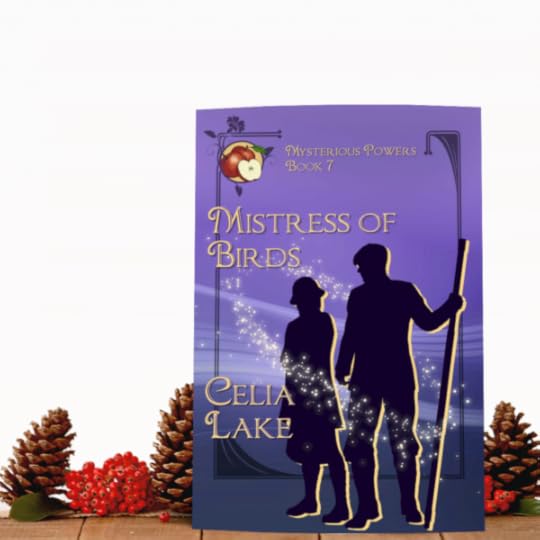
Mistress of Birds is the final book in the Mysterious Powers series, exploring the impact of the Great War on the people and institutions of Albion.
Thalia has had a certain small success with her literary writing. But her inspiration is gone, and no one is buying her stories. When her family volunteers her to stay at her great-aunt’s house on the edge of Dartmoor, she figures at least she’ll be fed.
Adam had a bad War. Ten years after he was invalided out of the Army with shell shock, he still hasn’t recovered. His family have lost patience, and when his uncle breaks his leg badly, they ship him off to lend a hand. Adam isn’t sure he’s able to do anything useful. When his uncle wants a report on the apple orchard, though, Adam realises something isn’t quite right.
The mysteries of the house and the apple orchard bring Adam and Thalia together, in search for answers. Together, they might just be able to figure out what’s going on, what’s making the eerie noises in the house, and why the apples ripen so late.
Mistress of Birds is my take on a Gothic romance (spooky house and all). All of my books can be read in any order, but this one stands alone particularly well.
One particular content note on this one (also on my content notes page). The book does deal with long-standing PTSD (what we’d now call CPTSD). If you’re sensitive to discussions of it, chapter 31 briefly references the barbaric treatment of it in 1917. (One paragraph, strong implications of what happened, few explicit details.)
Get your copy! Amazon Kindle Apple Books B&N Nook Google Play Kobo Other sources (also ask your library!)The post Mistress of Birds is out! appeared first on Celia Lake.
July 21, 2022
Welcome to Schola!
I had a fabulous time working with the map designer who did my previous two maps to do a map of Schola.
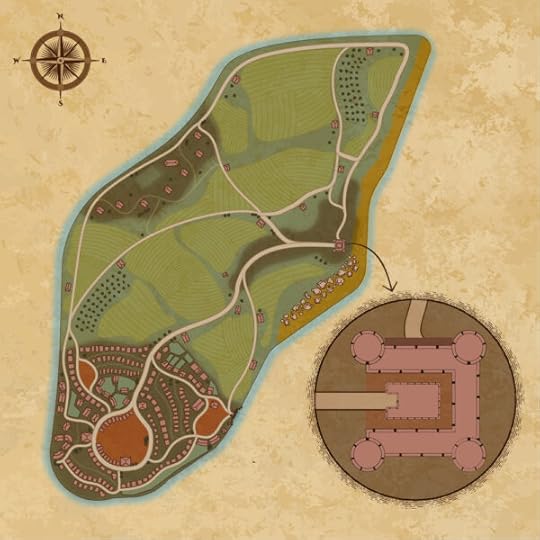
Michael MB did a great job taking my sketches (and the existing outline of the island from previous work) and turning it into this image.
A word about scale: the school is a square about 650 feet on each side going around the outer walls. (so quite large! That’s nearly twice the height of Big Ben.) Because that’s a really annoying scale to work with, the houses in the village are not to scale (and many of them are multiple houses in the same building.)
Check out the map on WorldAnvil for markers that link to specific locations and give more information, but here’s a quick rundown of where things are:
SouthThe south of the island is Schola village, which is mostly home and work space for magical crafters and others who benefit from a fairly low population density and strong magical potency. There’s a dock for the ferry, a portal, a large village square for gatherings and celebrations. It also has three pubs, and a range of shops, including a bookstore and a cafe. There’s also a village school.
Several of the secret societies also maintain a house in the village for their private use.
How many people live in the village? I haven’t ever fully pinned down a number, but probably around one to two thousand including children. That doesn’t include the school, which is 350 students, and about 75 staff members of varying types.
WestThat cluster of small buildings on the west coastline are cottages, used for the incoming first years prior to their sorting into houses (the last week of August, every year), and also used for various small group activities and excursions during the rest of the year. The cottages have basic comforts – beds, storage, bathing – with the larger building providing food and indoor gathering space.
The bulk of the islandThe green areas on the map are farm fields and orchards, including pasturage. Scholan can be self-sufficient for food if needed, especially with some supplemental fishing or barter with the local mermaid population.
Ordinarily, they do import a range of food goods by portal and ferry, just because it’s more of a pain to produce those things on the island or they’d like a greater variety than what they can grow easily. However, they do have enough space to rotate pastures, as well as magical support to replenish the ground and encourage better growth and harvest.
(I’ve been thinking about this recently because I’ve been considering the implications of rationing in World War II on Schola.)
East coastThere’s a beach along the east coast, and cliffs running along the entire east coast (below the school itself) down to the southern end of those boulders. Basically, that brown border is beach. There are caves tucked into the cliff face in several places, one of which features in Chasing Legends (and another of which is mentioned in Point By Point briefly.)
Schola itselfIt’s about a two mile walk from the front of the school down to the village, give or take half a mile. Close enough to be walkable (though there are also carts or small carriages that run up and back when that’s needed), but far enough that you aren’t just wandering down there between classes.
The school itself was built as a fortified castle right around 1100 CE, and it’s a fairly typical design for that. Eventually, the fourth wall of the outer curtain wall was removed, leaving it open on three sides. If there is ever a need for fortification in the future, the inner keep can be solidly fortified and hold everyone from the school (and quite likely the village) comfortably for a period of time. It’s a very big keep.
To the north of the keep (though tucked up against the raised ground that the castle is built on) are the stables, which hold a good couple of dozen horses, as well as having pastures and turnout spaces.
The housesThe seven houses have space in the curtain wall (and the building added to that over time). Running clockwise from the top left, it goes:
BoarHorseOwlLibrary and staff rooms (where Alexander and Isembard live in Eclipse )SalmonFoxSealBearThe ground floor of each house has the head of house’s quarters, a large common room space, a house library and study space, and rooms for the house staff who live in. The second and third floors have dormitories for first years, and rooms for the other four years, split by gender.
The keepThe main keep holds six floors for most of the space, with the two rooms on the left added later (around the 1300s). These host the salle (at the north) and rooms for Alchemy (on the south) that are a bit more protected to contain any magic that’s got a touch out of control. (Those are both a single story if a very tall one.)
The rest of the space is a mix of classrooms, staff offices, workrooms, and all the other things a school needs. The bulk of the ground floor (the east half of the keep) is the Great Hall, where meals and announcements take place, with kitchens to the north, and the infirmary to the south.
Again, go check out my authorial wiki for more details! I’ll be back next week to talk about connecting books across series and arcs (with some treats about what’s coming soon in those arcs.)
The post Welcome to Schola! appeared first on Celia Lake.



